How To Create Shade In A Greenhouse
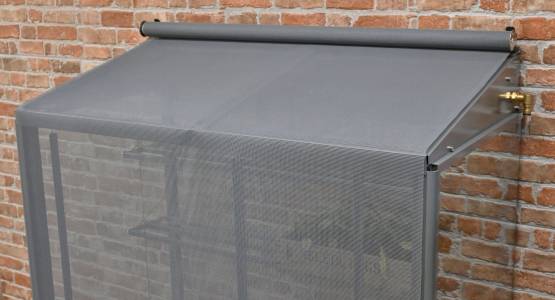
A Guide on How to Create Shade in a Greenhouse
Greenhouses provide an optimal growing environment for plants by controlling temperature, humidity, and light exposure. However, during the warmer months or in hotter climates, excessive sunlight can lead to overheating, plant stress, and reduced yields. Creating shade in a greenhouse is essential for maintaining a balanced growing environment, ensuring plants receive the right amount of light while being protected from extreme heat. This guide on how to create shade in a greenhouse will provide top tips, the best materials to use, and an overview of plants that require the most and least shade.
Why Shade is Important in a Greenhouse
While light is crucial for plant growth, excessive sunlight can be detrimental. Too much direct sun exposure can:
- Cause heat stress, leading to wilted or scorched leaves.
- Increase water loss through evaporation, requiring more frequent irrigation.
- Reduce fruit and vegetable yields due to high temperatures affecting pollination and growth.
- Lead to pest and disease issues as stressed plants become more vulnerable.
By introducing shading techniques, greenhouse owners can maintain an optimal balance between light and shade, helping plants thrive throughout the growing season.
Top Tips for Creating Shade in a Greenhouse
- Assess Sunlight Exposure
- Before implementing shading techniques, monitor how much sunlight your greenhouse receives throughout the day.
- Identify which areas experience the most heat and direct sun exposure.
- Consider seasonal changes, as summer months require more shading than winter.
- Use Shade Cloth
- Shade cloth is one of the most effective ways to control light intensity in a greenhouse.
- Available in different shading percentages (30%, 50%, 70%), allowing customization based on plant needs.
- Can be draped over the greenhouse, secured to the frame, or installed on a retractable system for adjustable shading.
- Install External Shading
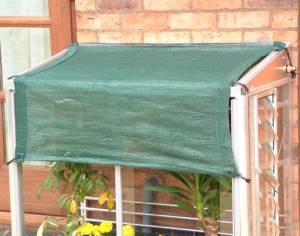
- External shading prevents excess heat from entering the greenhouse, keeping temperatures lower.
- Use netting, fabric, or natural materials like reed screens or bamboo mats to provide coverage.
- Position shading materials strategically to block the strongest sun exposure while allowing sufficient airflow.
- Apply Shade Paint
- Shade paint, also known as whitewash, is a liquid coating applied to the greenhouse glazing to reduce light penetration.
- It is a cost-effective, seasonal solution that can be washed off when no longer needed.
- Best suited for glass greenhouses, as it can be adjusted to create varying degrees of shading.
- Grow Climbing Plants for Natural Shade
- Vining plants like grapevines, passionfruit, or beans can be grown along trellises to create natural shade.
- These plants help cool the environment while also providing additional produce.
- Ensure they are positioned to block harsh midday sun without over-shading other crops.
- Use Internal Shade Screens
- Installing retractable shade screens inside the greenhouse offers flexibility in light control.
- Installing retractable shade screens inside the greenhouse offers flexibility in light control.
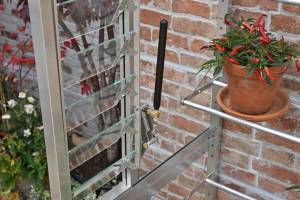
- Lightweight materials such as aluminet or thermal screens help regulate temperature while diffusing light.
- Optimize Greenhouse Ventilation
- Good ventilation is crucial to prevent heat buildup and improve airflow.
- Install vents, exhaust fans, or automatic openers to release excess heat.
- Position shade materials to allow adequate airflow and avoid trapping heat inside the greenhouse.
- Mulch the Soil to Reduce Heat Stress
- Applying a layer of organic mulch, such as straw, wood chips, or compost, helps retain soil moisture.
- Reduces temperature fluctuations and prevents soil from drying out quickly.
- Works best when combined with other shading techniques.
Best Materials for Greenhouse Shading
Selecting the right shading material depends on the level of shading required and the greenhouse setup. Here are some of the best materials for creating shade:
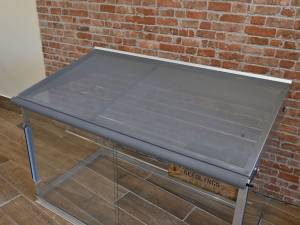
- Shade Cloth: Made from woven or knitted fabric, available in different shading percentages (30%-70%) depending on plant needs.
- Aluminet Shade Screens: Reflects sunlight while reducing heat buildup, suitable for high-temperature areas.
- Polycarbonate Panels: Diffuse light while providing insulation, helping to maintain stable temperatures.
- Reed or Bamboo Screens: Natural and eco-friendly option for filtering sunlight.
- Shade Paint: Temporary and cost-effective, allows flexibility in shading intensity.
- Frost Cloth or Horticultural Fleece: Provides light shading while also offering protection from temperature fluctuations.
Plants That Need the Most Shade
Some plants are more sensitive to intense sunlight and thrive in partially shaded environments. These plants often require 50-70% shading, especially in peak summer months:
- Leafy Greens: Lettuce, spinach, Swiss chard, and arugula prefer cooler conditions and can bolt if exposed to too much sun.
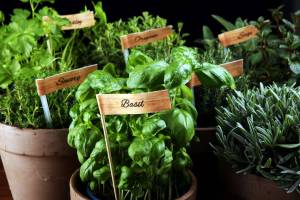
- Herbs: Cilantro, mint, parsley, and basil benefit from partial shade, preventing them from drying out too quickly.
- Berries: Raspberries and blackberries thrive with some shade, especially in hot climates.
- Brassicas: Cabbage, kale, broccoli, and cauliflower can tolerate some sun but benefit from shade in high heat.
- Ferns and Shade-Loving Flowers: Ferns, Hostas, impatiens, and begonias prefer lower light levels and indirect sunlight.
Plants That Need the Least Shade
Some crops require full sun exposure to produce high yields and should be placed in the sunniest parts of the greenhouse with minimal shading (30% or less):
- Tomatoes: Require at least 6-8 hours of direct sunlight to develop fully and produce fruit.
- Peppers: Thrive in full sun, though light shading in extreme heat can prevent sunscald.
- Cucumbers: Prefer bright conditions but can benefit from partial shade in excessive heat.
- Melons: Watermelons, cantaloupes, and honeydew melons need high sunlight to ripen properly.
- Root Vegetables: Carrots, radishes, beets, and onions require ample sunlight but can tolerate some dappled shade.
Conclusion
Creating shade in a greenhouse is a vital step in maintaining a healthy growing environment, particularly in hot climates or during peak summer months. By using shade cloth, natural plant shading, external screens, and proper ventilation, greenhouse owners can effectively regulate light and temperature. Understanding the shade requirements of different plants ensures optimal growth, preventing heat stress and maximizing yields. By implementing these shading strategies, you can create a balanced and productive greenhouse environment for your crops all year round.
